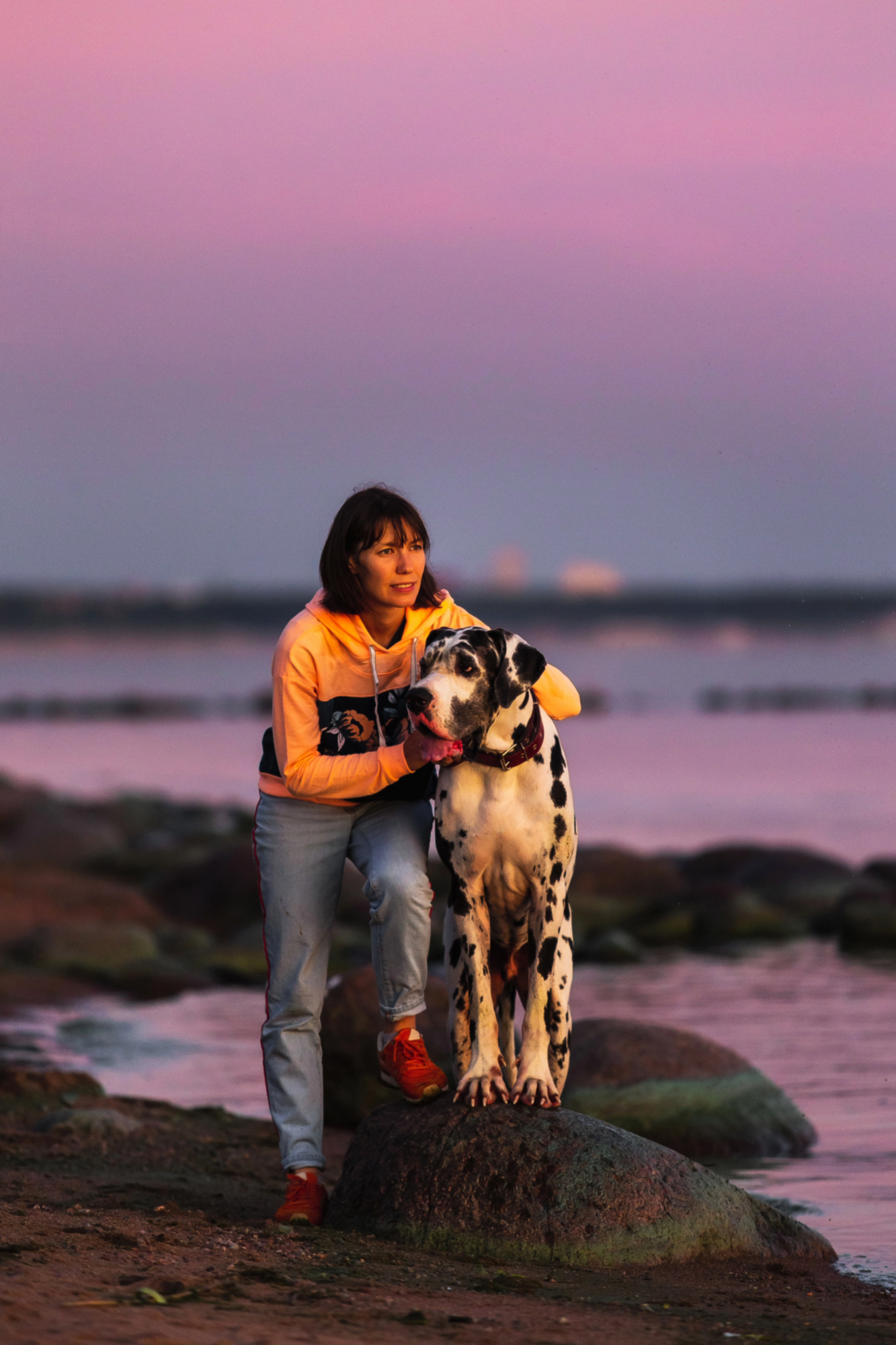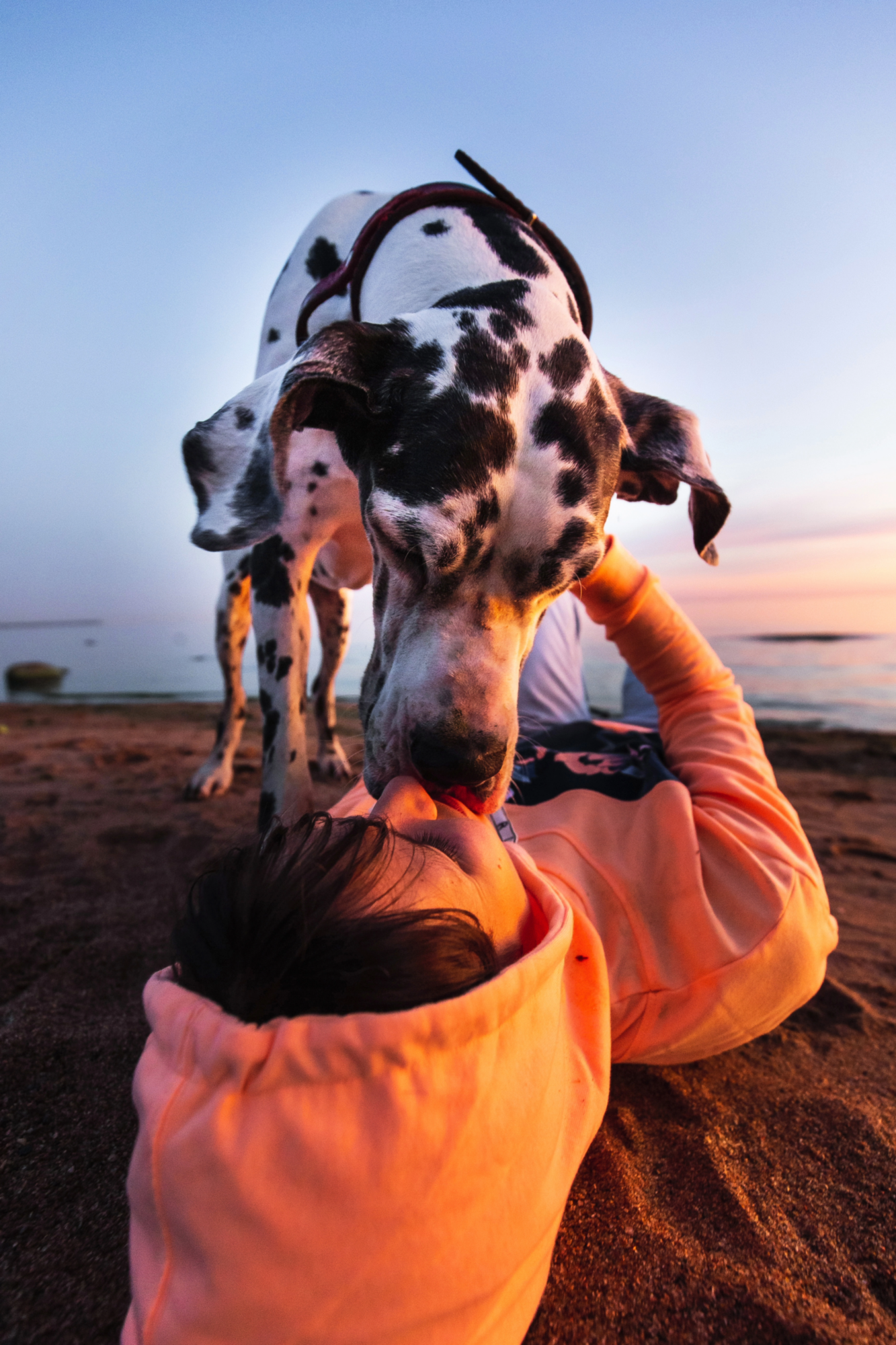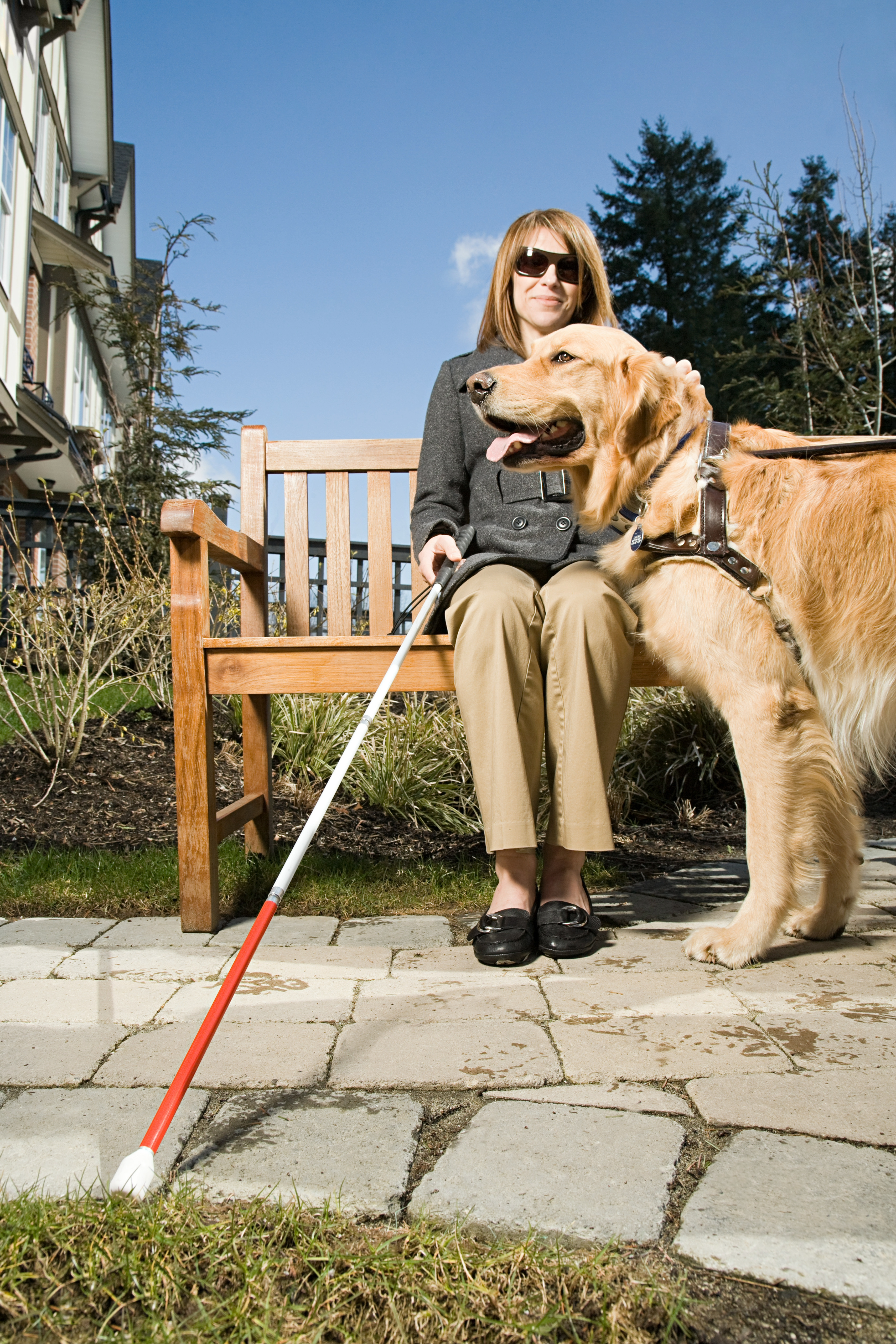Do you believe in science?
People don’t belong to a religion or political party because it makes sense. They belong to those institutions because it feels right. Why it feels right is irrelevant. It’s upbringing. It’s circumstantial. It’s environmental. Whatever it is, it sinks deep into the definition of self. And that’s why it’s generally not productive to get into a debate about religious or political topics because logic and argument will not convince anyone. These things are felt and define what is “right” and “true.” It does not matter if a counterargument is rock solid; because if it goes against what the receiver perceives to be right and true, it cannot also be right and true.
Science and medicine should be different. They should be based on facts, not beliefs. And yet…spaying or neutering your dog is a religious topic for most. Why is that? I have some ideas.


The love of animals is an emotion that runs as deep as any religious or political feeling. The connection we feel with our fellow creatures is primal. It feels sacred. It’s pure. If there is anything unquestionably good and selfless in the world, it is our connection to our animal friends.
It’s really the only reason anyone becomes a veterinarian. Of the literally hundreds of veterinary students and colleagues I have come across in my 20+ years in the profession, no one became a veterinarian for any other reason. It’s not the love of medicine. It’s not the love of money. It’s not to get a reasonable job with reasonable hours for reasonable pay after a reasonable amount of training. Without exception it is the human-animal bond.



So, of course, the euthanasia of so many healthy, homeless animals cuts deep. Few, if any, situations feel as dire to veterinarians, who feel the love of animals so deeply that they decided to dedicate their lives to helping and protecting them. Something had to be done.
But here’s, I think, where we went wrong so many decades ago. The reason for the massive population of homeless dogs was not that dogs were breeding like crazy. The reason for the massive population of homeless dogs was that they were homeless. OK, that’s circular logic. Let me say it another way. Dogs are domesticated animals. We created them. We brought them into our homes. And then too many of us turned them out of our homes. We assumed a responsibility and then, like so many other responsibilities, we abdicated from it. Left out in the cold to fend for themselves, well, fend they did. So the core of the problem is not dog fecundity; it’s irresponsible humans.

Some European countries, like the Netherlands and Scandinavian countries, figured that out and have virtually no stray dogs. Not because of spaying and neutering, either. In fact, it is illegal to spay or neuter a dog without medical reasons in these countries. No, the reason they don’t have stray dogs is that responsible pet ownership is part of their culture and legal system.
But it’s not in America. And veterinarians alone were not going to fix irresponsible humankind. So veterinarians here instead began a crusade using the tools they had: surgical sterilization. And “crusade” is the right word, because it became a religious movement. Now we were doing something about the problem. Never mind that what we were doing was not addressing the root cause of the problem. And never mind that after decades of effort it doesn’t seem that we’ve made a noticeable difference. Just like a question of religion, it doesn’t have to make any sense. It’s part of the belief system of being a veterinarian. Religious tenets, like baptism, don’t have to make sense. They are accepted by the faithful as part of the package. And an animal-loving person studying to be a veterinarian will accept spaying and neutering all dogs, even those that have zero opportunity to contribute to the pet overpopulation. Everything else that they are taught is based on scientific evidence. But this one thing isn’t. It goes unquestioned because the (faulty) justification is we are preventing the unjust killing of shelter dogs.
It isn’t enough to simply spay or neuter all dogs. Any production of puppies is seen to be contributing to the problem. Anti-breeder sentiment is part of the deal. No one challenges the fact that the types of dogs in shelters are not the dogs being produced by breeders. It seems ludicrous from an outside, non-biased perspective to be upset about the euthanasia of mixed breed dogs and to therefore villainize the breeders of purebred dogs. But that’s exactly what happens. Breeders are labeled as “crazy,” the worst type of client, the enemy of the dog, selfish, uncaring, complicit in the killing of thousands of shelter dogs. How can they create more puppies when so many are without homes and being euthanized?
Again, never mind that none of the puppies they produce end up in shelters. If this fact is pointed out, the obvious rejoinder is that by producing puppies, they prevent a puppy from the shelter from being adopted.
Fantasy world. But that’s exactly my point. Logic holds no sway when emotion is ruling the issue.



In the recent past, concerns have been published shedding some light on the damage we are doing by indiscriminate spaying and neutering. Is it any surprise that by removing a major endocrine organ, often from a juvenile animal, we create a plethora of downstream medical nightmares? No surprise if you can look at it as an unbiased medical professional.
We are, thankfully, gaining ground. I recently spoke to a packed room of interested veterinarians at the annual conference of the American Veterinary Medical Association where I reviewed recent studies about the effects of spaying and neutering on cancer, joint disease, immune-mediated disorders, cognitive dysfunction, behavioral abnormalities, obesity, incontinence, and lack of drive. I acknowledged the risks of pyometra, mammary cancer, prostatitis, and accidental pregnancy, but since all of those conditions are curable, and many of the conditions caused by spaying and neutering are not, it seemed like an uneven comparison. The crowd was receptive. And afterwards I received an invitation to write an article for a prominent veterinary magazine on the topic.


After decades of living with our heads in the sand it’s hard to admit we’ve been wrong for so long. We may not yet be able to concede that the spay/neuter craze is not solving the shelter dog crisis, but hopefully we can recognize that our (ineffective) efforts to save shelter dogs by spaying and neutering every puppy in our practice might be hurting those individual puppies. And the mantra of the veterinarian is “first do no harm.”
It’s my hope that veterinarians will continue to open their eyes, to recognize that responsible dog breeders are the best of clients, and the best of allies in the fight for canine health. I hope that more veterinarians will start treating the decision to spay or neuter like they do every other medical decision they discuss with their clients: on a case-by-case basis, considering the health risks and benefits to the dog and the family environment. Maybe leave the male intact. Or perform a vasectomy. Or use a Suprelorin implant. For the female maybe wait until she is sexually mature. And then maybe consider a LOVE spay, or ovary-sparing spay. There are options. As there should be. And we should be choosing those options based on facts, not feelings.



14 Comments. Leave new
Thank you so much for clarifying all you delved into. I have been raising, showing in conformation, and doing rally, obedience, canine scent work for years with my Bernese Mtn Dog and since 1975. I am also a Critical care RN. I have always thought that in people if you remove the reproductive parts of a man or a women, they are usually place on hormone replacement therapy. we don’t do that with dogs, that to me by spaying and neutering , you have disrupted the hormons that I believe all work all together in the body to make the body function better . In all my years I have only neutered two of my males due to health issues and only spayed two girls due to infections . And I have produced some of the longest lived Bernese….one who was almost 16 years old when she died and most have lived to 10 to 14 years .
Thank you so much for being a voice of reason. As a former officer in various roles, and eventually former president of an AKC licensed breed club, we’ve made all those informed arguments in public outreach. It is only now that the medical experts, the veterinarians, are beginning to see reason and scientific fact, and to change their practices corresponding ly, that the public is starting to accept the truth. We still have a long way to go. Thanks for all you do.
and
Your comments on dog over population are correct. Purebred dog breeders are trying to do the best thing they can do for their breed by testing and supporting studies on dcm ect. We have identified2 genes of which we have identified. We possibly could have 25 or more genes dictating the function of the canine heart. Our breed clubs support these studies. What I think is cool about your article is that the vet community is finally seeing the destruction that occurs to an animal when you spay and neuter early. The development physical and mental is destroyed in that animal. Thank You for a great article.
It’s refreshing to. read such an enlighten point of view on this subject. Clarifying each point will help when arguing against spay and neuter addicts.
Wonderfully written! Thank you for echoing what the breeding community has been concerned about for years. My clients have an incentive to delay alter and I have to take extra steps to source information so they can stand their ground when their veterinary team makes a recommendation for early spay/neuter. I certainly hope this discussion continues in the forums where change can happen from the top down.
Thank you so much for writing this blog post. My puppy contract with new Berner families states in part, “the dog’s testicles or ovaries shall not be removed under any circumstances. Only gonad sparing procedures are allowed, and only after the puppy is 24 months of age.” There is an exception that will allow spay/neuter only in the unlikely event it is required to save the dog’s life. Unfortunately many otherwise responsible breeders still require new families to spay/neuter the puppies at some specific age, usually 18-24 months. The breeders typically make this requirement because they don’t want the new owners to become backyard breeders or contribute to the designer dog population. Hopefully, with articles like this and others, these breeders will begin to agree that the health of the puppy/dog should be the priority and decide to rewrite their contracts in a way that keeps dogs intact, AND forbids breeding of any kind.
I always enjoy your posts and I’ll be sharing this on FB. You bring up some great points and, like someone else said, when women have full hysterectomies, we are put on hormones. My almost 11 year old boy was set up for a neuter last week and literally at the last minute I said no. I have some time to think about it but the biggest reason now, to not do it, is the horrible spay/neuter coats. His coat is so manageable and unless he has a health problem I can’t do it. My bitches also, from now on will get a OSS when they are done showing or having litters. I have a 13 year old who was spayed at 9 years old and her coat is ridiculously hideous. Sadly, most pet owners get their collies fixed and it’s hard for me to tell them they shouldn’t have done that, because I have been one of the rebels who didn’t require a spay/neuter contract. It never set right with me, with my responsible pet homes.
Here!here!! HOORAH
It is just grand to see this in print. Spred the word for it is True
Excellent article with lots of food for thought. I have two females one of whom had a litter after all health clearances, and was spayed at five. My other female was never bred, but spayed at six. That’s because the risk of pyometra at that age seems to exceed the risk of cancer associated with altering. The female who has never been bred is now 14 and healthy, and the other is 8 and healthy. I have a four year-old male. I do not plan to neuter at this time. But the key is *responsible pet ownership*!
I see lots of legislation being written to control the population of dogs on shelters. It would be terrific if the legislators had your understanding of the real problem. Thank you for your well written and honest perspective.
Awesome article, and I thank the person who sent it to me. My puppy is almost fifteen months old, and female. Several months ago I had read an article regarding this issue, and have thought a great deal about the impact of endocrine disruption. My last five dogs were all females. one spayed at five months, two at age two, and two at age seven. Looking back, the ones that were not spayed early did quite a bit better health wise. Thank you for sharing this important piece. Its arrival could not be more timely.
This is a fantastic piece! Thank you for your thoughtful and educational response to a complex topic. I would be interested in hearing your thoughts on how early spay/neuter may contribute to IVDD symptoms in some breeds.
Because of the way fixing a dog (or cat) changes their hormones, it also affects their coat/dander. Throughout years of being around and living with fixed, unaltered cats and dogs, I find I am only allergic to them if they are fixed. As long as I didn’t get them neutered or spayed, I could cuddle them all day without itching / sneezing my head off. I’ve never read this to be confirmed, but I feel strongly about it based on my own experiences.